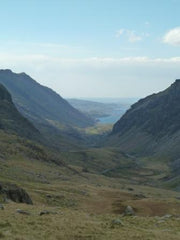Blog
Hill-shaded OS maps for trail runners and walkers October 14 2019
If you love hiking or running in the hills then one of our customised hill-shaded Ordnance Survey map wallpapers could be just the thing to inspire you and help you to plan your routes. The hill shading accentuates the terrain, to give the map a feeling of depth on your wall.

Trail runners are a particularly hardy bunch, getting out into the hills all year round. Trail Running Magazine tested the map wallpaper and after hanging a map of her local area on the wall, Editor Claire Maxted said
“Awesome! Now I can see all the trails in my area at a glance, plus the lumpy bits stand out brilliantly with the hill-shading!”
The wallpaper is backed with self-adhesive so that you can stick it onto a prepared wall with no glue needed. As you add each adjoining length of wallpaper, you can unstick it and reposition it to ensure that the map is lined up across the joins in the paper. To see Claire’s tips for hanging the wallpaper, watch her YouTube video https://www.youtube.com/watch?v=3s3Juv9g7O8
If you’d like a map on your walls to plan your routes in the hills, we can print a map centred on the postcode of your choice in England, Scotland or Wales using the Ordnance Survey 1:50 000 Landranger® or 1:25 000 Explorer® style mapping.
Simply provide us with the postcode on which you’d like us to centre your map, specify the Ordnance Survey map style you prefer and select one of our standard wallpaper sizes. We’ll send you a proof showing the image that will be printed on your wallpaper for approval. We can also produce made-to-measure wallpaper, please read our wallpaper tips and provide the measurements of your wall in our quote form.
Map Your Favourite Picnic Spot June 13 2018
National Picnic Week 15th-24th June 2018
 We Brits love our picnics, and what better way to spend time with family and friends away from the hustle and bustle of every day life.
We Brits love our picnics, and what better way to spend time with family and friends away from the hustle and bustle of every day life.
There's nothing like taking a stroll through the countryside to your favourite spot and sharing a delicious picnic.
In the UK we are spoilt for choice when it comes to beautiful locations, whether it's the stunning Cornish coast or the rugged peaks of the Lake District we all have our favourite place to picnic. And if you can't get out to the countryside our towns and cities have some gorgeous and easily accessible parks, London is said to be one of the greenest cities in the world! So get out in the fresh air and enjoy a picnic in your favourite setting.


With our postcode centred maps we can capture your favourite picnic spot on one of our canvases or framed prints...
 ...or to make a real statement we can print your favourite picnic spot on our self-adhesive map wallpaper, a great way to make a feature wall! Choose from a selection of set sizes or we can make a wallpaper to your bespoke size - fill in our online quote form for a price and a free digital proof.
...or to make a real statement we can print your favourite picnic spot on our self-adhesive map wallpaper, a great way to make a feature wall! Choose from a selection of set sizes or we can make a wallpaper to your bespoke size - fill in our online quote form for a price and a free digital proof.
We have a great selection of maps in different styles and at different scales.
If you're not sure which map to choose we've picked out some of our favourite picnic spots below on three of our different Ordnance Survey maps:
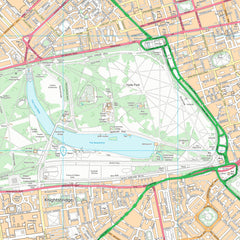 London's Hyde Park is approx 350 acres and as well as the memorials, fountains and statues there are plenty of green areas and gardens which make ideal picnic spots. This Ordnance Survey high detail street map shows great detail within the park and is the perfect style of map for any urban area with parks located within it.
London's Hyde Park is approx 350 acres and as well as the memorials, fountains and statues there are plenty of green areas and gardens which make ideal picnic spots. This Ordnance Survey high detail street map shows great detail within the park and is the perfect style of map for any urban area with parks located within it.
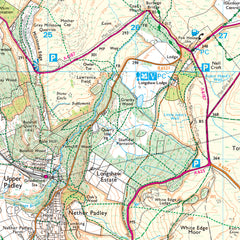 The National Trust have some beautiful locations around the country, Longshaw is a great place to walk with meadows, ponds and woods to explore all shown here on Ordnance Surveys Explorer Map. This map is a superb walking map showing footpaths, streams and contours so you can find your ideal place for a picnic.
The National Trust have some beautiful locations around the country, Longshaw is a great place to walk with meadows, ponds and woods to explore all shown here on Ordnance Surveys Explorer Map. This map is a superb walking map showing footpaths, streams and contours so you can find your ideal place for a picnic.
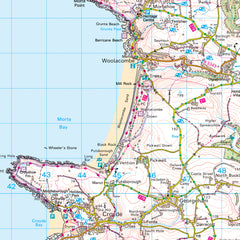 If it's a coastal setting you're after where better than the North Devon coast? Woolacombe beach is a three-mile long stretch of golden sand so plenty of space to sit with a picnic and watch the waves lap onto the shore. Woolacombe beach and the surrounding area can be seen on this Ordnance Survey Landranger Map, giving a great overview of the beach and surrounding area.
If it's a coastal setting you're after where better than the North Devon coast? Woolacombe beach is a three-mile long stretch of golden sand so plenty of space to sit with a picnic and watch the waves lap onto the shore. Woolacombe beach and the surrounding area can be seen on this Ordnance Survey Landranger Map, giving a great overview of the beach and surrounding area.
Where do you like to stop with your picnic rug and basket?
Snowdonia Mapping - with hillshading May 07 2018
This weekend, some of the Love Maps On team took a trip to the breathtaking Snowdonia National Park where we were lucky enough to enjoy the higher than average temperatures the UK has had this Bank Holiday weekend.
We'd dusted off our walking boots and had already prepared a Love Maps On print of the area using OS Explorer Mapping with our added Digital Hillshading.
We chose a route which took us from a Roman camp via the Miners' Track to the abandoned copper mine workings close to the jagged peak of Snowdon. Of course we weren't the only ones - the paths were busy with visitors making their way up to the Snowdon summit.


After finding a sheltered spot by Llyn Llydaw for our picnic, we continued to climb before looping back on the Pyg Track for views over the Pass of Llanberis and returning to our start point.
Our Love Maps On Ordnance Survey Explorer Map with added digital hillshading really helped us understand the complex topography of our immediate surroundings in a way that our other map-based hand-held tech just couldn't manage. See how digital hillshading can add texture and depth to your map here.
Such a beautiful landscape.

The Kids are back at school...time to spruce up the house. October 03 2017
September and October are a great time to do a revamp in the house, the kids are back at school, the days are cooler and it's still a little too early to think about Christmas.
Whether you go for a complete redecorate or just a few select changes we have some great unique products that will transform any room.
Self Adhesive Wallpaper
 Our custom made Ordnance Survey, postcode centred map wallpapers give a room a real wow factor. It could be your local area or a place you love to visit, we can make a wallpaper of your chosen area to fit your wall exactly.
Our custom made Ordnance Survey, postcode centred map wallpapers give a room a real wow factor. It could be your local area or a place you love to visit, we can make a wallpaper of your chosen area to fit your wall exactly.
If you love history or just like the vintage look we have a fantastic selection of vintage map wallpapers from the early 1800's through to the 1940's all of which can be postcode centred.
 Our wallpapers come in easy to hang rolls and are self adhesive so no need for any messy paste, just peel off the back and stick to the wall. See our wallpaper information for more detail on measuring, preparation and hanging.
Our wallpapers come in easy to hang rolls and are self adhesive so no need for any messy paste, just peel off the back and stick to the wall. See our wallpaper information for more detail on measuring, preparation and hanging.
Watch this video of our wallpaper being hung by one of our customers:
'Customised OS map wallpaper by Love Maps On'
Kitchens, Bathrooms & Cloakrooms
Give your kitchen a contemporary look with our bespoke glass hob splashbacks. Ordnance Survey maps can be centred on any UK postcode and are digitally printed onto toughened glass to create a stunning and unique look. All custom made to order.
If you prefer the more traditional look our ceramic map tiles work well in a kitchen, bathroom or cloakroom. Choose your map and where you would like the map centred, then choose your tile size and layout.
 To help you decide which map would best suit your needs take a look at our guide on postcode centred maps with information on scale, detail and dates.
To help you decide which map would best suit your needs take a look at our guide on postcode centred maps with information on scale, detail and dates.
We offer a quote and proofing service for our bespoke products, click here to find out more.
Love is in the air...and on the map February 07 2017

Show your love this Valentine’s day with a personalised gift that celebrates a place that’s close to your hearts with a heart-shaped map cushion or canvas from LoveMapsOn.
We’ll print a high-quality map centred on the location of your choice. It could be the location where you met, where you had your first date, or a romantic spot that’s an important part of your shared story. Choose a personalised heart map cushion or heart map canvas.
To order your unique gift, simply give us the postcode for the centre of your map, choose a modern or vintage map style to be printed and add a short personal message to your loved one.

We can also print your personalised map on canvases of various sizes, on wallpaper or even on a jigsaw puzzle. View the full range of Valentine's day gifts from LoveMapsOn


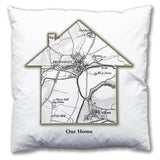
Heathrow's expansion mapped through time with Ordnance Survey maps. October 25 2016
Heath Row, as it was then known, was first mentioned by name in documents from around 1410. The parish mainly comprised flat fields that were irrigated, and at times flooded, by several waterways that drained into the River Colne. Two of these, the Duke of Northumberland’s River and the Longford River, were artificial. The former was constructed in the 1530s to provide additional power for Isleworth Mill, the latter in the 1630s to improve the water supply to Hampton Court.
Ordnance Survey Old Series 1822
On all maps, the blue area shows Heathrow's extents today, with the expansion plans in pink and runways in purple.
The Ordnance Survey maps pick up the story in the early 19th century. The British landscape in the early and mid 19th century was typified by small farms and small villages, interspersed with woods and open countryside and linked by a network of ancient roads and tracks. The area around Heath Row was no exception.
Ordnance Survey Revised New Series 1897
In the late 19th century, orchards and market gardens began to replace arable land and some new buildings were constructed, but in general the character of the area altered very little. This was about to change.
Ordnance Survey Popular Edition 1920
Heathrow's aviation history goes back to the First World War when the site was used as a military airfield, although little evidence remained by the time of the Popular Edition map of 1920. In this year the airport was closed for various logistical reasons including bad communication, the bumpy nature of the ground, its tendency to become boggy and muddy in winter and its frequent covering of mist. As the map showing the current expanse of the airport shows, these problems have since been overcome.
In the late 1920s the Colnbrook by-pass was opened which led to increased industrial development in the area. One result was the re-opening of the airfield, as the Great Western Aerodrome, by Fairey Aviation as a centre for aircraft assembly and testing.
It had become clear by the 1930s that civil aviation would increase and the government began to make provision for the capital’s air services. The plan was to expand the two existing aerodromes at Croydon and at Heston, to the east of modern-day Heathrow, and to add two new ones, at Fairlop in Essex and Lullingstone in Kent. Heathrow’s flat terrain, proximity to London, good communications and comparative lack of housing must already have made this an attractive candidate for expansion, despite its other disadvantages. Work was under way on all these projects when war was declared in September 1939.
Ordnance Survey New Popular Edition 1945-48
In late 1942, there was increasing demand from the Air Ministry for a base for the new long-range heavy troop-carrying planes, existing facilities in the south of England being inadequate. After some debate, this slightly boggy area of market-garden farms was chosen as the site of a wholly new airfield. Construction work began in May 1944 on land originally acquired from the vicar of Harmondsworth. Although the location was ideal, the terrain was not. 100 million gallons of water had to be pumped out of the ponds and 14 miles of pipes were needed to drain rainwater into a nearby gravel pit. Another task was the clearance and demolition of the hamlet of Heath Row. Few other places have become so posthumously famous.
At the time, the Air Ministry’s case must have seemed unanswerable, but doubts exist as to whether there was ever any intention to use Heathrow for military purposes. The fortunes of war were shifting in the Allies’ favour, so making large-scale troop movements by air less likely; whilst the argument for a large new civil aerodrome was clear to those who were considering how post-war Britain might be shaped.
The 1930s plan of four small airports around the capital was now inadequate. Instead, the contemporary logic ran, one larger hub was needed which could be purpose-built for the new aircraft and would be capable of future expansion as the need arose.
The main problem was that any civil project on this scale would have led to protracted planning enquiries and divisive financial wrangles within Whitehall. Using wartime powers to requisition the land offered a more certain outcome. The then Parliamentary Under-Secretary Harold Balfour later admitted that he had misled the cabinet on this point in order to expedite the process. Were military use the only requirement, many existing RAF bases could have been converted with far less time and effort. Whatever the real motives, Heathrow was allowed to slip into being almost unnoticed.
The military origins of the project were quietly forgotten and work continued on building what was now unambiguously a civilian airport. This was officially opened in May 1946 with a flight to Buenos Aires via Lisbon, the departing passengers enjoying terminal facilities that consisted of little more than a large tent. At the time, Heathrow’s managers stated, with rare prescience, that it would eventually become the largest airport in the world.
Brian Quinn.
© Cassini Publishing Ltd.
Ordnance Survey Present-day map.
Our Vintage Map Wallpapers are made to measure for your space. Just send us the measurements and we’ll provide a quote and digital proof. The wallpapers are self-adhesive, simple to apply, and have a wipe-clean finish. Contact us to find out more.
London's iconic tube map now on wallpapers and tiles October 24 2016
We love the London Underground map and we're delighted that, for the first time, we can offer you the classic tube map on custom wallpaper or ceramic tiles. With its striking colours and modern lines, the tube map makes a great design feature for a contemporary space, whether it’s an office, a living room, kitchen or bathroom.

The London Underground map evolved over the past century and its revolutionary simplicity means that it's recognised globally as an iconic design.
The original design by Harry Beck, an engineering draftsman for London Underground, is thought to have been inspired by electrical circuit board diagrams. Working on the map in his spare time, Beck used a simple line layout and spacing the stations evenly in order to show their relative positions and make it easy to navigate. When the map was published by London Underground in 1933, it quickly gained popularity. Beck’s design remains the basis of the modern tube map.
Today, the tube map design and the London Underground logo are copyright and trademark protected and can only be reproduced under licence. At Love Maps On, we’re pleased to have a licence with Transport for London which means we can reproduce the tube map on made-to-measure wallpapers and ceramic tiles.
We can print the London Underground map on ceramic tiles to cover a range of different sized areas with the map scaled accordingly. Our tiles have a gloss finish and are suitable for kitchens and bathrooms.
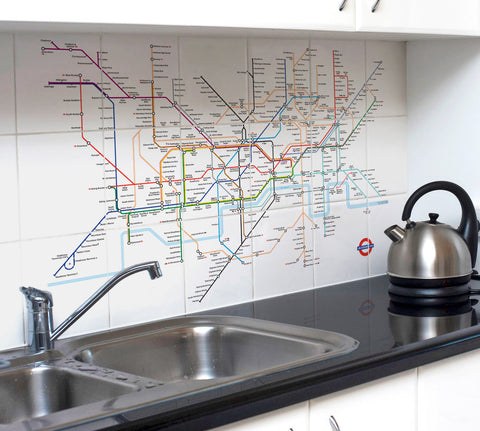
Our London Underground map wallpapers are made to measure for your space. Just send us the measurements and we’ll provide a quote and digital proof. The wallpapers are self-adhesive, simple to apply, and have a wipe-clean finish. Contact us to find out more.
Treasure your favourite British seaside spots August 10 2016
We've all got our favourite seaside spots. From the beautiful beaches of Cornwall, to the sweeping sands of the Gower or the wild coastal scenery of Scotland - there are so many scenic spots to choose from. Not forgetting our fondness for traditional resorts such as Blackpool and Southend. We return to the places we love again and again, whether it's for a windswept coastal walk or a paddle on a sunny day.
Now you can take your favourite coastal location home with you, with a map canvas from LoveMapsOn. We'll print a high-quality map image centred on the location of your choice, it could be your favourite family holiday destination or holiday home. You could give a loved one a canvas map gift, personalised with your own message.

Simply provide the postcode of the location of your choice on which to centre the map, choose the canvas size and add an optional personal message of one or two lines, with up to 30 characters per line. We'll add your inscription at the bottom of the map. Our canvases are hand-stretched on a wooden frame, printed on premium poly-cotton using fade resistant ink with a satin finish.
If you'd like to make your favourite seaside spot a stunning feature of your home, you could choose our custom-made map wallpaper. Here's a map wallpaper featuring one of our favourite beaches, Oxwich Bay in Wales.

Our wallpaper is available in standard sizes, or request a quote for wallpaper made-to-measure for your space. For enquiries, please contact us.
Vintage Victorian map wallpaper shows your location in detail May 08 2016
A vintage map can help you to discover the story of your property and its place in history. Decorate a feature wall with this historical map wallpaper and your location’s past will be a talking point for your guests and visitors.
For anyone interested in local history, studying a map can help to bring the past to life and show how your area has changed over the centuries. It may help you to feel more connected and involved with your home's past. You could discover how the footprint of your property has changed since it was built, or perhaps there was a previous building on the site. You may get a sense of how streets in your area were originally planned or find evidence of local facilities such as a public house, railway station or allotments that no longer exist. There are all sorts of fascinating insights about your neighbourhood to be discovered on a vintage map.
We love these detailed Victorian Ordnance Survey maps at 1:2,500 scale that show streets, buildings, landmarks and property boundaries as they were in the mid 1800s. New to our vintage map wallpaper collection, these detailed Victorian maps make a fascinating centrepiece to a room in your home or office. High quality printing means that details of the maps are brought to life.

Simply provide us with the postcode in England, Scotland or Wales on which to centre your map. Our wallpaper is available in standard sizes, or request a quote for wallpaper made-to-measure for your space. For enquiries, please contact us.
Ships, clock and stars: The Quest for Longitude March 09 2015
Last year marked the 300th anniversary of the passing of the Longitude Act in 1714, and the National Maritime Museum Greenwich hosted ‘Ships, Clocks & Stars: The Quest for Longitude’, an exhibition telling the extraordinary story of the race to determine longitude at sea. The race was eventually won by an extraordinary engineer, John Harrison whose maritime timepieces go back on display at the Royal Observatory in Greenwich on 16th March. We love a tale of danger on the high seas and an epic quest by a heroic figure. For us, the story of John Harrison’s lifelong dedication to accurate maritime timekeeping for measuring longitude is a compelling quest and Harrison is a hero of engineering, navigation and seafaring.

Exhibition promotion at the National Maritime Museum The Royal Observatory, Greenwich
For millennia, sailors and navigators used the position of the sun, moon and stars to estimate their position at sea. Sailors used the magnetic compass from the early 14th century, and estimates of the distances sailed, to help keep their ships on a steady course. However on long journeys when errors occurred or storms and currents threw calculations off, ships could end up hopelessly lost or worse, shipwrecked. In the 17th and 18th century, sailors needed much more reliable means of navigating in order to travel across oceans, discover new territories and exploit trade routes. Alongside work by explorers and surveyors to produce accurate coastal maps, astronomers were producing navigation tables, measuring the angle of the sun to the horizon at noon local time for various latitudes throughout the year. Armed with navigation tables, navigators could make fairly reliable estimates for latitude (position north to south) but not longitude (position east to west). For every 15 degrees that a ship travels eastward, the local time moves one hour ahead. Similarly, travelling westward, the local time moves back one hour for every 15 degrees of longitude travelled. In order to measure longitude, sailors needed not only accurate navigation tables, but to reliably measure time and be able to compare time at their location to a point of reference. To this end, King Charles II established an observatory at Greenwich in 1675.
“Whereas, in order to the finding out of the longitude of places for perfecting navigation and astronomy, we have resolved to build a small observatory within Our Park at Greenwich.” Charles II
In 1714, the British Government passed the Longitude Act and offered a prize of £20,000 - a sum equivalent to many millions of pounds today - to anyone who could perfect and demonstrate a solution accurate enough over long voyages to be used to locate a ship with the desired precision. The prize galvanized astronomers, engineers and navigators to work on new solutions, but many people believed that the problem could not be solved.
From 1728 John Harrison, a carpenter from Lincolnshire with little formal education took on the challenge. Harrison had already established himself as an innovative maker of clocks with a level of timekeeping accuracy that were the best of their day. Over three decades, Harrison developed a series of revolutionary marine clocks that were spring-driven to counter the motion of a ship. Harrison’s genius was in inventing devices to regulate his timepieces for changes in temperature and reducing friction. He submitted two clocks to the Board of Longitude which were tested and rejected. By 1762, Harrison submitted a hand held chronometer called H4 which was tested and, eventually, in 1773 after much negotiation with the Board and the intervention of King George III, he was awarded the prize at the age of eighty .

John Harrison and his H4 chronometer
Greenwich was central to the story of the quest for longitude, with the Royal Observatory becoming a testing site for marine timekeepers and the place at which the astronomical observations for comprehensive navigational tables were made. Harrison's celebrated marine clocks, including H4 – the one that was finally accepted by the Board of Longitude as allowing accurate timekeeping - are preserved at the Royal Observatory Greenwich and go on public display again from 16th March 2015.
Three hundred years on from the passing of the Act of Longitude, a new Longitude Prize was launched by the Prime Minister with a prize fund of £10 million to help solve one for the greatest issues of our time. Following a public vote, the challenge set for the Longitude Prize is to tackle microbial resistance to antibiotics by creating a cost-effective, accurate and easy-to-use test for bacterial infections that will allow health professionals to administer the right antibiotics at the right time. Go to www.longitudeprize.org learn about the Longitude Prize.
The 'Age of Discovery' in maps August 07 2014
On a recent trip to Lisbon in Portugal, we found this wonderful world map mosaic. The huge marble floor map shows Portugal's achievements as the first global sea power and celebrates the voyages of Portugal's explorers in the 'Age of Discovery' during the fifteenth and sixteenth centuries. We love maps with historical significance and antique flourishes and we're taking inspiration from this beautiful example.
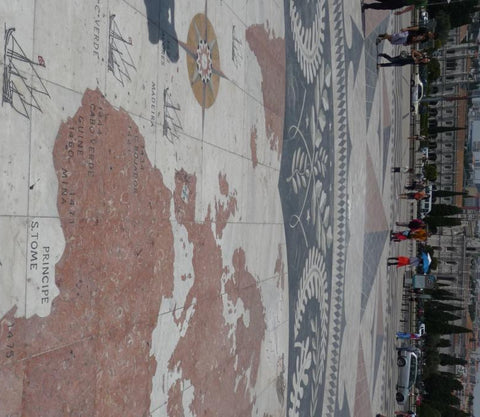
In the fifteenth century, Portuguese explorers used caravels, small and manoeuvrable ships with triangular sails that allowed the vessels to sail close to the wind, and a shallow keel ideal for sailing in coastal waters. The map depicts caravels and gives dates and locations of Portuguese discoveries. In order to support trading activities, the Portuguese royalty established a centre for the study of navigation, ship design and astronomy. As a result, Portuguese maps of the fifteenth century were the best in Europe and highly sought after. Theft of trading route maps across Europe led the Portuguese to safeguard their maps by giving them the status of state secrets.
 |
 |
The combination of fast ships, royal investment in exploration and a pioneering spirit, led to the establishment of Portuguese ports in Africa and Asia. Portuguese navigator and explorer Vasco da Gama was the first captain to sail from Europe to India, discovering a route around the Cape of Good Hope, reaching the Indian coast at Calecut (now called Kozhikode in the state of Kerela) in 1498 and helping to establish Portuguese trading posts in India and Mozambique.
 |
 |
| Vasco da Gama | Ferdinand Magellan |
Da Gama was followed by another famous Portuguese explorer, Ferdinand Magellan who was involved in a series of expeditions to India, Africa and Malaysia. Intent on finding alternative routes for the valuable spice trade, he set off in 1519 to cross the Atlantic in search of a westwards route to the spice islands of Indonesia. His epic voyage took him round the southern point of South America, via the western Pacific and on to the Philippines. Magellan met his death during a dispute with local tribes there, but one ship from his fleet returned in 1522, completing the first circumnavigation of the world.
 |
 |
| Antique world map by Hondius as wallpaper | Detail of South America |
Take inspiration from the 'Age of Discovery' in your home with an antique world map from Love Maps On. Our Hondius map is one of the most beautiful of the period, with decorative borders that depict explorers and cartographers of the age. The close-up image above shows the Strait of Magellan, the passage that Magellan first took around the southern tip of South America. Choose the Hondius map as wallpaper or as a canvas print.
Give your room a vintage map makeover with our custom wallpaper July 22 2014
Vintage maps look great and tell us so much about the story of our best-loved landscapes. Here at Love Maps On, we love vintage maps and we're delighted to bring you early Ordnance Survey maps as wallpaper centred on your chosen postcode. Give a room a vintage map makeover that's personal to you and showcases a location that you love.
The Ordnance Survey, Britain's national mapping agency, published its first paper map in 1801 and went on to produce map series that have become iconic among map lovers. Our collection features the Ordnance Survey's earliest mapping projects during the pre-Victorian and Victorian eras, a period when our towns and cities were fast-developing. As well as telling us about British history and culture, these vintage maps make wonderful decoration for a room. Their subtle shading, delicate colouring and birds-eye depiction of landmarks are simply beautiful. If, like us, you love to unfold a classic paper map then you'll find the styling of these maps irresistible.
 |
 |
| Old Series map wallpaper | Revised New Series map wallpaper |
The Old Series, published between 1805 and 1874, was the first comprehensive mapping of the country, printed at a scale of one-inch-to-one-mile. This was followed by the Revised New Series, published from 1879, the first colour maps of Britain and also printed at one-inch-to-one-mile. The images above are of the Old Series and Revised New Series maps centred on the same postcode, showing the growth Reading over half a century.
For a more detailed map view, we also offer the County Series which was published by the Ordnance Survey from 1840 at a scale of six-inches-to-one-mile. At this scale, you have a Victorian street map with a greater level of detail of streets, property outlines, landmark names, parish boundaries etc. This lends itself to creating wallpaper of cities and towns that were fast-growing in Victorian times such as Birmingham, Bristol, Edinburgh, Exeter, Glasgow, Leeds, London, Manchester, Nottingham.
 |
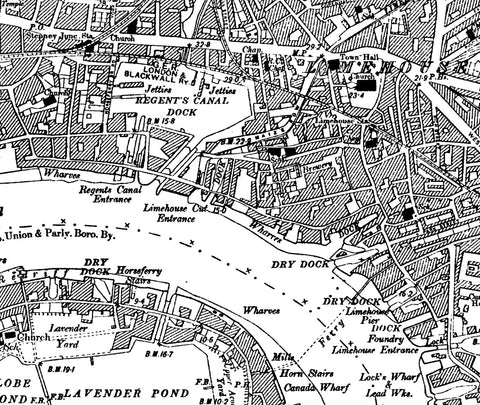 |
| County Series map wallpaper | County Series map wallpaper detail |
Make one of these fascinating vintage maps a feature of a wall in your home or workplace, centred on a favourite town or countryside location that's personal to you. Simply choose the vintage Ordnance Survey map that you prefer, provide us with the postcode in England, Scotland or Wales on which to centre your map and select one of our standard wallpaper sizes. We'll send you a proof showing the image that will be printed on your wallpaper. We can also produce made-to-measure wallpaper, please contact us for a quote.
Our self Adhesive wallpapers can be stuck to any non-porous surface, such as walls, doors and windows, and have a highly durable non-wrinkle finish.
or choose our standard, paste the wall wallpaper.
'On the Map: Why the World Looks the Way it Does' May 09 2014

Exploring the cultural and historical significance of maps, 'On the Map: Why the World Looks the Way it Does' tells the stories of early mapmakers such as Greek scholar Ptolomy and the traders who discovered new territories and expanded our understanding of the world. Simon Garfield's book on map making through the ages was amongst the gifts in the Love Maps On Christmas stocking. We love learning about influential maps and cartographers, ancient and modern, so this gift was just perfect!
It's an engaging read and we really enjoyed Garfield's insights into significant historical maps that have been hidden over the centuries and the stories of those who rediscovered them, recognising their importance and bringing them back to public view. These include the famous medieval Mappa Mundi in Hereford Cathedral and Venetian monk Fra Mauro's 15th-century map of the world which was heavily influenced by Marco Polo's travels almost two centuries after his expeditions.
'On the Map' brings the story of cartography right up to date with the latest satnav technology, GPS and map apps that place each of us, as individuals, at the centre of the map. Garfield explores how the digital revolution is transforming mapping more than any previous innovations in cartography. If you'd like to learn more about the book, visit Simon Garfield's website.
City Maps from History April 07 2014
Reading a fascinating feature from the Guardian on 'Ten city maps from history' reminded us that historical maps can be informative and attractive.
The collection shows how early city maps evolved from simple representations of what could be seen on the ground, through to more detailed graphics that communicated complex economic or social ideas. The featured maps include an 1812 map of the area devastated by the great fire of Moscow and Charles Booth's 1891 poverty map of London which provided a survey of life and labour across boroughs.
Want to take inspiration from historical city maps for your home decor? Love Maps On brings you Ordnance Survey maps of London dating from 1805 and 1897, an era when London was the world's largest city and capital of the British Empire.

Ordnance Survey Old Series, London, 1805 - the first national mapping series of England and Wales.


Ordnance Survey Revised New Series, London, 1897 - the first colour mapping series of England and Wales.
The maps show London at a time when the city was expanding rapidly and its population grew from one million to more than six million people. London was transformed by the development of the railway network and the urbanised area spread to Islington, Paddington, Holborn, Camden, Southwark and Lambeth. You can choose the maps printed on canvas in a choice of four sizes.

Stanford's map of London, 1891 (close up showing the Thames, Tower of London and Fenchurch Street station).
To make a snapshot of history a fabulous wall feature, you can choose a London vintage map as a wallpaper. Love Maps On provides wallpaper of Stanford's street map of central London from 1891 at 1:10,560 scale, showing fascinating detail of the wharves, customs houses, guild halls, warehouses and trading exchanges that made London a mighty port city. Our wallpapers are available in a variety of sizes printed on paper or fabric material.
We will be adding vintage maps from across Great Britain to our collection soon, so look out for our historical maps of your favourite cities and places.
If you'd like to chat to us about our maps and what we can do for you, just contact us or drop us an email to hello@lovemapson.com.
From Walk to Wall February 20 2014
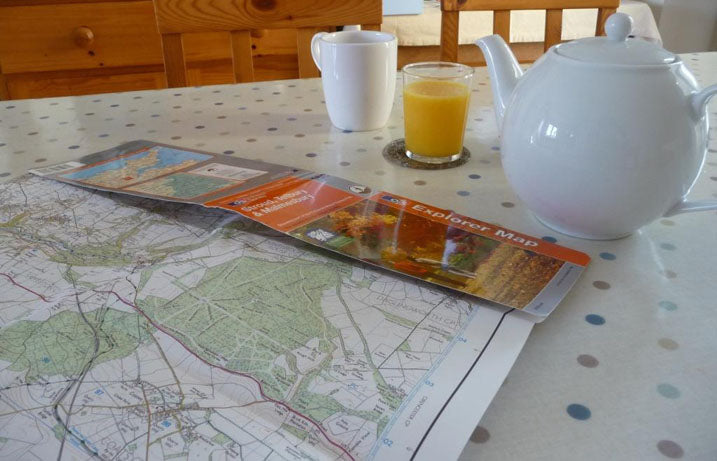
At long last the days are stretching out and, after hibernating at home for what feels like months, we're starting to look ahead to spring walks and rediscovering the great outdoors. There's something exciting about unfolding an Ordnance Survey map and planning a trip.
If, like us, you love Ordnance Survey maps, you could make one a feature in your home. The next time you're thinking of adding a photo or artwork to an empty space on the wall, why not hang a map instead? Love Maps On custom make wallpaper, canvases and posters of Ordnance Survey maps centred on the postcode you specify in Great Britain.
Choose from a 1:10,000 scale street map that's ideal for towns and cities, showing the detail of street names, parks and buildings.
 |
 |
| Example of our Custom Ordnance Survey Street Map Classic Wallpaper | Close up of Ordnance Survey 1:10,000 scale street map |
Alternatively, a 1:25,000 scale map – based on the popular Explorer® map series for outdoor activities - shows a larger ground distance and is suitable for rural and urban locations. At this scale, you get an overview of the area with contours, buildings, roads and paths shown.
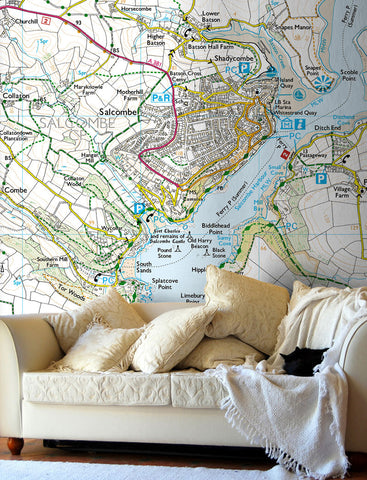 |
 |
| Example of our Custom Ordnance Survey Explorer Map Wallpaper | Close up of Ordnance Survey 1:25,000 scale Explorer® map |
Wallpaper is currently available at two set sizes; 200 x 180 cm and 350 x 240 cm and comes either paper backed or fabric backed. We'll provide you with a pasting kit to make applying it easier. Posters are available in standard (A1), medium (A0), large and extra large sizes.
If you'd like to chat to us about the options, just contact us or drop us an email to hello@lovemapson.com.
Our new website is launched! October 11 2013
After much hard work, and quite a few late nights, Love Maps On has a live and functioning website. Have a look around, tell us what you think. We're very much looking forward to the future and expanding our product range.

